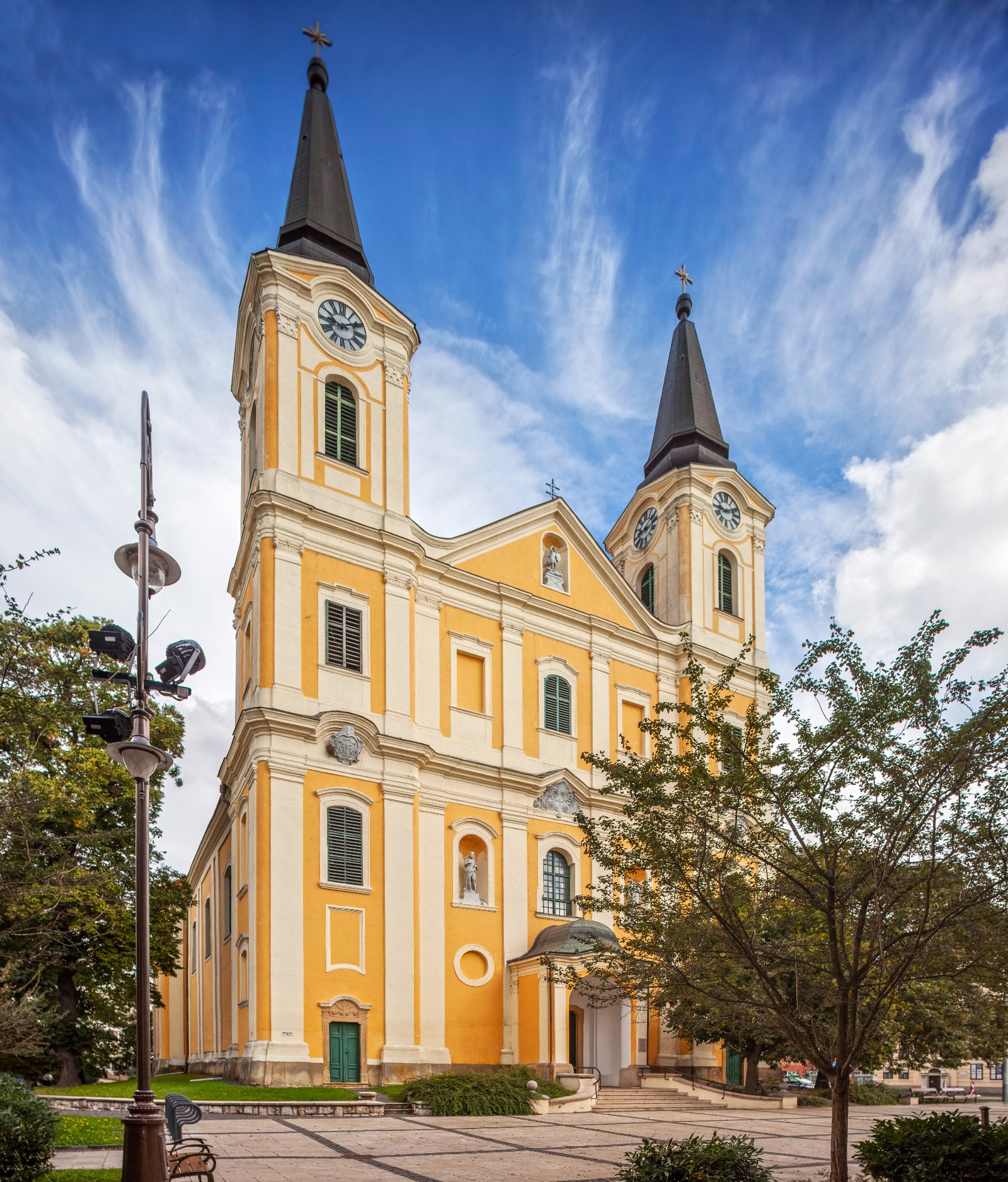Straight ahead – a stroll from the spire to the tower clock
Tours

Onion dome, Zsolnay porcelain, ball shaped dome, colourful windows – do not go straight ahead only if you are interested in towers, as on this trail you can see true curiosities or buildings that are significant from a secular and a religious perspective, as well.
It is no exaggeration to say that this baroque building is our city’s most monumental church, though how could we ever hope to exceed the praise of literary man and academician Dezső Keresztury, who was born in our city: “(…) artistically the most significant building of the town (…). It was constructed in the difficult, but in all its raggedness still alluring style of the Transdanubian baroque, and sat there extensively, lying low in the city centre like an attentive hen.”
A church stood here even in the 13th century, around whose walls the building with the two towers was built from 1747 to 1769. József Mindszenty served here as a parson at the beginning of his career.
The square is small, but rich in sights! Look around and find points of interests across Onion Helm Ispita and the Post Palace: the bust of Kossuth Lajos, the great stateman, next to it the building of the former savings-bank, on whose facade you can find old postcards from Zalaegerszeg.
Here you can take a glimpse at the history of the local Jewish community in Zalaergerszeg, our architectural legacy, spherical spires, colourful windows. Do not miss this fascinating and impressive institution, as not only is it historically significant, but it is also one of the centre points of the city both geographically and architecturally. Therefore, together with its concerts, it is the heart of local cultural life.
The building is a great example of the eclectic synagogue-architecture, long ago its interior used to be decorated with colourful paintwork and stuccoes. It lost its religious function after the world war, and has been renovated and used as a concert and exhibition hall since 1983. Beside the temporary exhibitions, a composition about the history of the town’s Jewish community can be viewed on its upper floor, where the main point of interest is the floor map.
The Calvary Chapel stands on the small hill next to the Roses’ Square, signalling to the passers-by that it tells stories about Zalaergerszeg’s past. The chapel had already stood in 1751, it was built by the Tailors’ Guild and named after Saint Helena. It is surrounded by the city’s ancient cemetery with one of the oldest grave signs belonging to the sandstone tomb of János Gothard bootmaker, the former caretaker of the Trinity Statue at Mindszenty Square. If you decide to visit, you can find reliefs made in the 1930s on the inner side of the fence wall, which show the calvary of Jesus.
The construction of the church was initiated by the small Calvinist community at the end of the 1930’s. In order to increase the capital necessary for the development, 2000 postcards were distributed in the country depicting the church to be built, which was designed by Bálint Szeghalmy. The church was inaugurated in 1942.
Its painted glass windows are decorated by the coats of arms of historic families. The windows were removed in WWII in order to protect them and were only placed back in the final decades of the 20th century.
Its flower-patterned tile stove was created by the local stove-maker Gábor Németh, who was the father of János Németh, the “Artist of the Nation” and a ceramic artist who received the Munkácsy Award.
Strolling at the end of the city’s main street, be sure to visit the neogothic evangelical church, which was built by the renowned craftsman, Tamás Morandini for the small evangelical community. The Angster-organ, which is still functional today, is a real curiosity. The local evangelical community still believes that the first time their church’s bell tolled was when Ferenc Rákóczi II was reburied in 1906. The sculpture of Martin Luther stands on the eastern side of the church.
Sensational! Our Tower Clock is completely unique, shamelessly displaying the workings of its clockwork in its glass cage. The reason why it is not featured in the Book of Guinness Records is because it cannot be compared to anything, therefore, lacking the grounds of comparison, it could not be registered as a record.
